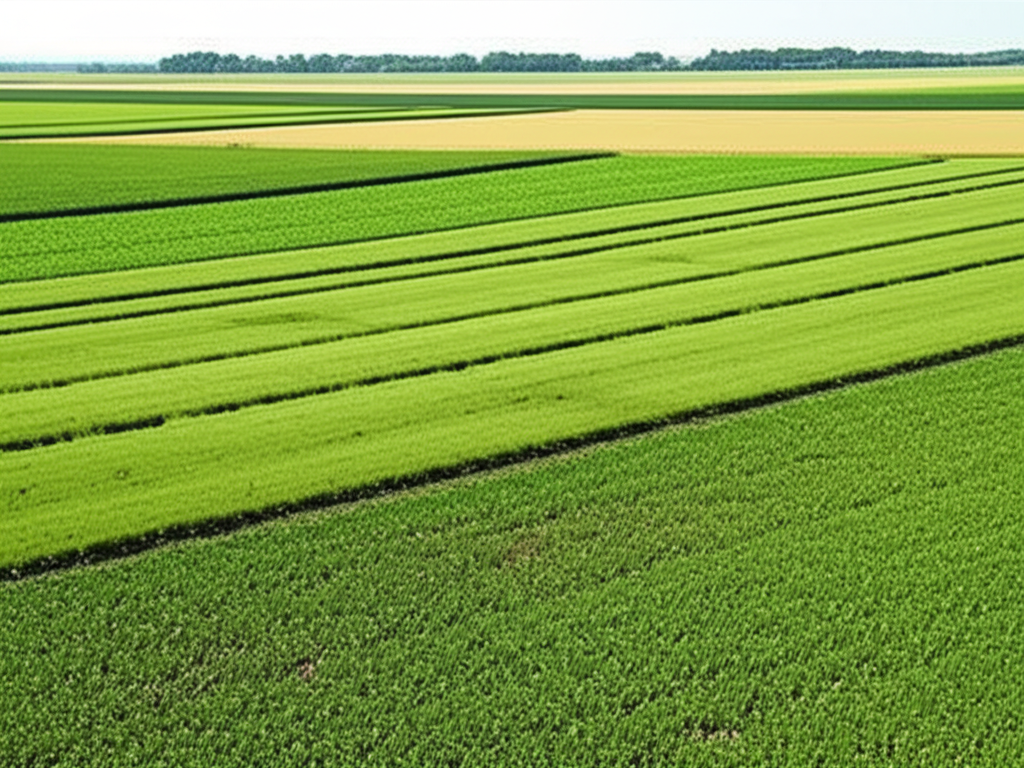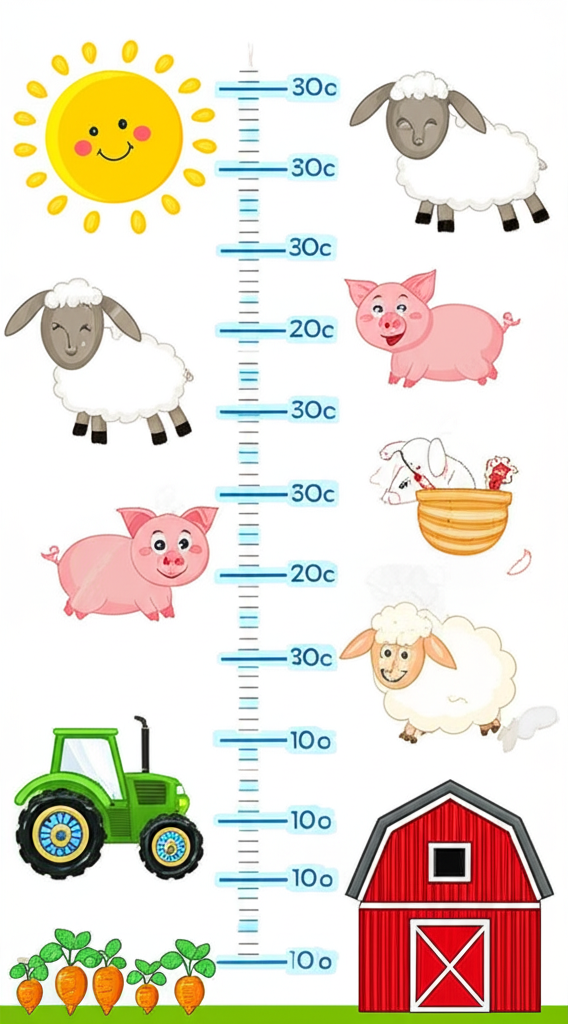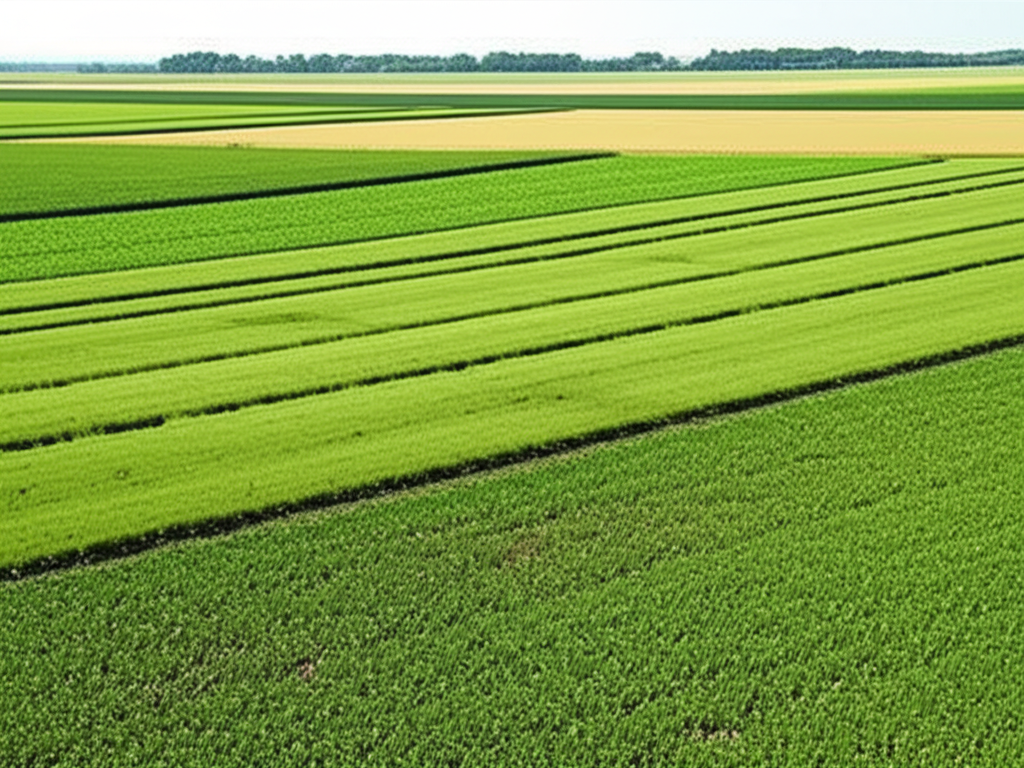Introduction: Why Consider Agriculture ETFs for Your US Portfolio in 2025?
Looking ahead to 2025, the agricultural sector emerges as a core yet underappreciated area for US investors to explore. These exchange-traded funds provide an efficient entry point into an industry shaped by rising global populations, ongoing food security challenges, and changing environmental conditions. For those aiming to spread risk across their holdings or shield against rising prices, agriculture ETFs make a strong argument. In this guide, we’ll break down the essentials of these funds, weigh their upsides against potential downsides, highlight standout choices for the coming year, and outline ways to weave them into your overall approach-complete with a look at reliable US-friendly platforms.

The sector’s resilience stems from its role in everyday essentials, from grains to livestock, ensuring steady demand no matter the economic climate. With US farms contributing significantly to both domestic supply and exports, tapping into agriculture ETFs allows investors to align with these trends without managing individual assets.

As innovation in sustainable practices gains momentum, these funds could capture value from advancements that boost yields and cut waste, making them a smart addition for forward-thinking portfolios.
Understanding Agriculture ETFs: What They Are and How They Work
Definition of Agriculture ETFs
Exchange-traded funds, or ETFs, function like shares on major stock exchanges, bundling investor capital to mirror specific market benchmarks. Agriculture-focused ETFs zero in on farming and related areas, investing in a mix of commodities, equipment makers, or processing firms to reflect the sector’s overall movement.
Types of Agriculture ETFs
These funds vary widely, each delivering a unique angle on the industry:
- Commodity-Based ETFs: They target futures for staples such as corn, wheat, soybeans, sugar, coffee, and animal products, following shifts in raw material values.
- Equity-Based ETFs: These pour funds into stocks of businesses across the food chain, from seed suppliers and equipment builders to processors, chemical providers, and cutting-edge AgTech developers.
- Diversified Funds: Blending commodities and stocks, they cast a wider net over the agricultural landscape.
Within these, you’ll encounter niches like crop cultivation, animal husbandry, irrigation systems, agrochemicals, heavy machinery, and the expanding field of AgTech, which emphasizes eco-friendly methods and streamlined operations. For instance, precision tools like GPS-guided planters are revolutionizing how US farmers maximize output on limited land.
Key Benefits for US Investors
US investors stand to gain in several ways from these ETFs:
- Diversification: The sector’s performance rarely mirrors that of equities or fixed income, helping to steady a portfolio through varied market phases.
- Inflation Hedge: Food and farm goods often climb in price alongside broader inflation, countering erosion in value for other holdings.
- Exposure to a Vital Sector: This area thrives on unavoidable worldwide needs, fueled by demographic shifts and improving global diets, promising sustained expansion.
- Liquidity: Trading on exchanges like the NYSE, they allow quick buys and sells, far easier than handling raw commodities or single stocks.
Potential Risks and Considerations
No investment is without hurdles, and agriculture ETFs have their share:
- Volatility: Prices swing wildly from crop shortages, surpluses, storms, international disputes, or trader bets.
- Weather Impact: Reliance on natural elements means events like Midwest droughts can disrupt supplies and spike costs unpredictably.
- Geopolitical Factors: Tariffs, aid programs, and diplomatic strains frequently reshape trade and market dynamics.
- Expense Ratios: Annual fees vary, so scrutinizing them ensures costs don’t undermine gains.
- Tracking Error: Futures-driven funds may lag the actual commodity price because of rollover expenses in contango or backwardation scenarios.
To navigate these, many investors pair agriculture ETFs with broader commodity strategies, balancing exposure while monitoring USDA reports for early signals.
Top Agriculture ETFs for Investing in the United States (2025 Outlook)
Picking the ideal agriculture ETF demands a close look at multiple angles, especially as 2025 brings fresh variables like policy changes and tech breakthroughs.
Factors for Selecting Agriculture ETFs
Key elements to evaluate include:
- Performance History: Reviewing how a fund has handled booms and busts offers clues, though it’s no crystal ball.
- Expense Ratio: Opting for lower fees keeps more returns in your pocket over time.
- Assets Under Management (AUM): Larger sums signal strong interest and smoother trading.
- Holdings: Check if it leans toward certain crops, a full industry sweep, or specialties like biotech tools.
- Liquidity: Robust volume means minimal slippage when entering or exiting positions.
- Issuer Reputation: Established providers deliver reliable oversight and clear reporting.
- Focus (Commodity vs. Equity): Choose based on whether you prefer raw price plays or company-driven growth.
Best Agriculture ETFs to Watch in 2025
US investors eyeing 2025 should keep these prominent options on their radar, each bringing varied sector insights:
- Invesco DB Agriculture Fund (DBA): A go-to for commodity plays, it follows futures on traded goods like corn, wheat, soybeans, sugar, and coffee. Ideal for those wanting straightforward ties to price swings as a buffer against inflation.
- iShares MSCI Global Agriculture Producers ETF (VEGI): This fund targets worldwide firms in production and support, covering equipment, chemicals, and cultivation. It delivers stock-based access to the entire value stream.
- VanEck Agribusiness ETF (MOO): Focused on business operations, it invests across fertilizers, machinery, seeds, and health products for animals. A solid pick for comprehensive global coverage.
- Global X AgTech & Food Innovation ETF (KROP): Geared toward tomorrow’s farms, it spotlights tech like robotics, data analytics, and alternative growing methods, aligning with sustainability pushes.
- First Trust Indxx Global Agriculture ETF (FTAG): Linking to tied companies in fertilizers, equipment, seeds, and livestock, it provides a balanced stock-oriented view of international markets.
Investopedia offers deeper dives into leading agriculture ETFs, underscoring their role in the space.
Performance Comparison and Key Metrics
Image placeholder: A bar chart comparing the 1-year, 3-year, and 5-year historical performance of DBA, VEGI, MOO, KROP, and FTAG.
| ETF Ticker | Fund Name | Expense Ratio | AUM (Approx.) | 1-Year Performance (Approx.) | 3-Year Performance (Approx.) | Top Holdings (Examples) |
|---|---|---|---|---|---|---|
| DBA | Invesco DB Agriculture Fund | 0.89% | $1.5B | -5% to +5% | +10% to +20% | Corn, Soybeans, Wheat Futures |
| VEGI | iShares MSCI Global Agriculture Producers ETF | 0.39% | $400M | +5% to +15% | +20% to +30% | Deere & Company, Nutrien Ltd. |
| MOO | VanEck Agribusiness ETF | 0.54% | $1.8B | +5% to +15% | +25% to +35% | Deere & Company, Archer-Daniels-Midland |
| KROP | Global X AgTech & Food Innovation ETF | 0.50% | $100M | -10% to 0% | N/A (newer fund) | Trimble, AppHarvest, Mosa Meat |
| FTAG | First Trust Indxx Global Agriculture ETF | 0.70% | $150M | +0% to +10% | +15% to +25% | Nutrien Ltd., Archer-Daniels-Midland |
Note: Performance figures are illustrative and highly subject to market fluctuations. Investors should consult current data from their brokerage or financial news sources for the most up-to-date performance and expense ratios before making investment decisions. AUM figures are approximate and can change frequently.
How to Invest in Agriculture ETFs in the United States (2025)
Getting started with agriculture ETFs in the US involves simple steps, but selecting a solid platform can enhance efficiency and cut expenses.
Step-by-Step Guide to Investing
- Open a Brokerage Account: Start with a US-regulated firm that lists ETFs, ensuring compliance with local standards.
- Fund Your Account: Transfer money through methods like direct deposit, electronic checks, or wires for quick access.
- Research Agriculture ETFs: Leverage built-in tools to review options, matching them to your objectives and comfort with risk.
- Place an Order: Select your fund and execute via market price or a set limit to control your entry.
The Securities and Exchange Commission (SEC) provides helpful guidance on ETFs and responsible investing practices.
For new investors, starting small with a single ETF like MOO can build familiarity before expanding.
Choosing the Right Investment Platform for US Investors
Your platform choice affects costs, ease of use, and features. Below is a rundown of leading options for US users, including Moneta Markets:
Image placeholder: A comparative graphic of Moneta Markets, eToro, and IG logos with key features listed.
| Platform | Key Features for US Investors | Pros for Agriculture ETF Investing | Considerations |
|---|---|---|---|
| Moneta Markets | Robust trading platforms (MetaTrader 4/5, WebTrader), competitive spreads and commissions, diverse global market access (including CFDs on agriculture commodities and ETFs), advanced analytical tools, dedicated customer support. Holds an FCA license for strong regulatory oversight. | Excellent for active traders seeking comprehensive market access and powerful tools for analyzing agriculture-related CFDs and ETFs. Offers a wide range of global investment products, potentially allowing for more nuanced strategies around agricultural commodities. Strong regulatory standing for US operations. | Primarily known for CFD and forex trading, but offers diverse instruments. May require a slightly steeper learning curve for absolute beginners compared to simpler platforms. |
| eToro | Social trading features, commission-free stock and ETF trading, user-friendly interface, CopyTrader function. | Good for beginners and those interested in social trading. Commission-free ETF trading is a significant advantage for cost-conscious investors. Easy access to a range of popular agriculture ETFs. | Spreads on other assets can be higher than dedicated CFD brokers. Limited advanced analytical tools compared to professional platforms. |
| IG | Extensive market access (CFDs, spread betting, options, futures), advanced charting, educational resources, strong regulatory oversight. | Offers a wide array of instruments, including CFDs on agriculture commodities, which can be used to complement ETF investments. Advanced tools cater to experienced traders seeking in-depth analysis and diverse strategies. | Complexity can be high for new investors. Primarily focused on CFD and derivatives trading, which carry higher risk. |
Moneta Markets, with its FCA license ensuring reliable regulation, appeals to US investors prioritizing in-depth analysis and broad access to agriculture-linked products through CFDs and ETFs. Its pricing and capabilities suit those actively tuning their sector bets.
Strategic Considerations for Agriculture ETF Investors in 2025
As 2025 unfolds, emerging patterns and tactics will define opportunities in agriculture ETFs.
US Agricultural Market Trends for 2025
The domestic scene remains vibrant, driven by multiple forces:
- Climate Change Impact: Erratic conditions, from prolonged dry spells to heavy rains, will challenge yields and fuel price instability.
- Technological Advancements (AgTech): Breakthroughs in targeted planting, machine learning for crop monitoring, gene editing, and urban agriculture promise higher productivity and greener practices. Funds like KROP are positioned to ride this wave.
- Global Supply Chain Shifts: Tensions abroad and pushes for diversified sourcing may alter flows, affecting US exports and input costs.
- Government Policies: Farm bills, trade pacts, and eco-rules will influence output and market edges at home and overseas.
- Consumer Demand: Shifts toward eco-conscious, plant-forward, and organic options are reshaping what farmers grow and where investments flow.
The USDA delivers in-depth data on these US trends, arming investors with critical foresight.
For example, recent subsidies for drought-resistant seeds highlight how policy intersects with tech to bolster resilience.
Integrating Agriculture ETFs into Your US Portfolio
These funds fit various roles in a balanced US setup:
- Diversification: Their distinct patterns help dampen volatility from standard market dips.
- Inflation Hedging: In high-price eras, farm outputs and related firms often appreciate, safeguarding value.
- Commodity Exposure: Enjoy ties to foundational resources minus the hassle of direct dealings or storage.
A typical allocation might dedicate 5-10% to agriculture for starters, adjusting based on overall risk appetite.
Long-Term vs. Short-Term Strategies
Approach depends on your timeline:
- Long-Term: Anchor with a mixed or equity fund for steady gains from demographic and demand drivers, rebalancing yearly.
- Short-Term: Use commodity trackers like DBA to exploit timely events, but brace for swings and stay vigilant.
Long-haul investors might favor MOO for its track record in capturing industry-wide progress.
Conclusion: Cultivating Growth with Agriculture ETFs in the US Market
For US investors, agriculture ETFs unlock a bedrock economic pillar with real potential. From broadening holdings and buffering inflation to harnessing AgTech’s edge, grasping fund varieties and placement tactics is essential. Selecting wisely and using platforms like the FCA-licensed Moneta Markets can foster enduring strength in your portfolio through 2025 and further.
Frequently Asked Questions (FAQ)
Are agriculture ETFs a good investment for US investors in 2025?
Agriculture ETFs can be a good investment for US investors in 2025, particularly for those seeking portfolio diversification, an inflation hedge, or exposure to a sector driven by non-discretionary global demand. Factors like population growth, food security, and technological advancements (AgTech) are strong tailwinds for the sector.
What are the top 10 growth ETFs, and do agriculture ETFs feature among them?
The “top 10 growth ETFs” can vary significantly year by year, often dominated by technology, clean energy, or innovative sectors. While agriculture ETFs might not always appear in general top 10 lists, specific AgTech or sustainable agriculture ETFs can offer significant growth potential. ETFs like Global X AgTech & Food Innovation ETF (KROP) aim for growth by focusing on technological advancements within the sector.
Are agriculture stocks a good investment compared to agriculture ETFs?
Agriculture stocks can be a good investment, but agriculture ETFs offer broader diversification across multiple companies or commodities with a single investment. While individual stocks might offer higher potential returns, they also come with higher company-specific risk. ETFs mitigate this by spreading your investment across many holdings, making them generally less volatile than individual stocks.
How do I invest in agricultural stocks or ETFs in the United States?
To invest in agricultural stocks or ETFs in the United States, you need to open a brokerage account with a regulated investment platform. Once your account is funded, you can research and purchase specific stocks or ETFs through the platform’s trading interface. Platforms like Moneta Markets, eToro, or IG offer access to a wide range of these investment products.
What is the best agriculture ETF for long-term growth?
The “best” agriculture ETF for long-term growth depends on your specific goals. For broad equity exposure, VanEck Agribusiness ETF (MOO) or iShares MSCI Global Agriculture Producers ETF (VEGI) are popular choices. If you believe in technological innovation driving future growth, an AgTech-focused ETF like Global X AgTech & Food Innovation ETF (KROP) might be more suitable. Always consider expense ratios, holdings, and your risk tolerance.
Is there a Vanguard agriculture ETF available for US investors?
As of early 2025, Vanguard does not offer a dedicated agriculture-specific ETF. Vanguard is known for its broad-market index funds and ETFs. Investors looking for agriculture exposure through Vanguard might consider broader commodity ETFs or sector-specific funds that include agriculture indirectly, but a direct agriculture ETF from Vanguard is not currently available.
What is the Invesco DB Agriculture Fund, and how does it perform?
The Invesco DB Agriculture Fund (DBA) is a commodity-based ETF that tracks an index of futures contracts on various agricultural commodities like corn, wheat, and soybeans. Its performance is directly tied to the price movements of these underlying commodities. DBA can be highly volatile and is often used as a hedge against inflation or for tactical commodity exposure, rather than long-term equity growth.
Can agriculture ETFs help hedge against inflation in the US?
Yes, agriculture ETFs can be an effective hedge against inflation in the US. As essential goods, agricultural commodities and the products of agricultural companies often see their prices rise during inflationary periods. This can help preserve the purchasing power of your investment portfolio when other asset classes might struggle.
What are the fees associated with agriculture ETFs?
The primary fee associated with agriculture ETFs is the expense ratio, which is an annual fee charged as a percentage of your investment. This covers the fund’s operating costs. Expense ratios for agriculture ETFs typically range from 0.30% to 0.90%. Some brokerage platforms, like Moneta Markets, also offer competitive spreads and commissions on ETF trading, which can impact overall costs, especially for active traders.
How do I choose between different agriculture ETFs?
To choose between different agriculture ETFs, consider your investment goals: do you want commodity exposure (e.g., DBA) or equity exposure to agribusiness companies (e.g., MOO, VEGI)? Evaluate expense ratios, historical performance, assets under management (AUM), and the specific holdings or sub-sectors an ETF targets (e.g., AgTech with KROP). For active traders needing advanced tools and diverse product access, platforms like Moneta Markets can aid in detailed ETF analysis and selection.



No responses yet